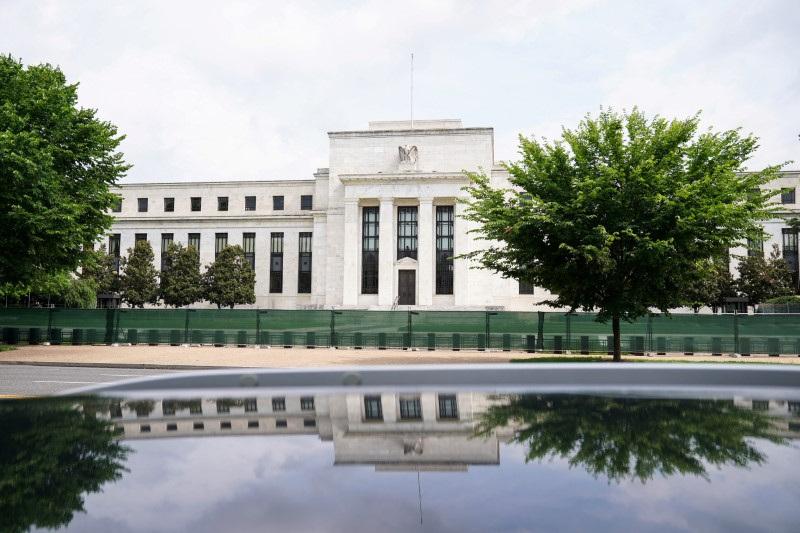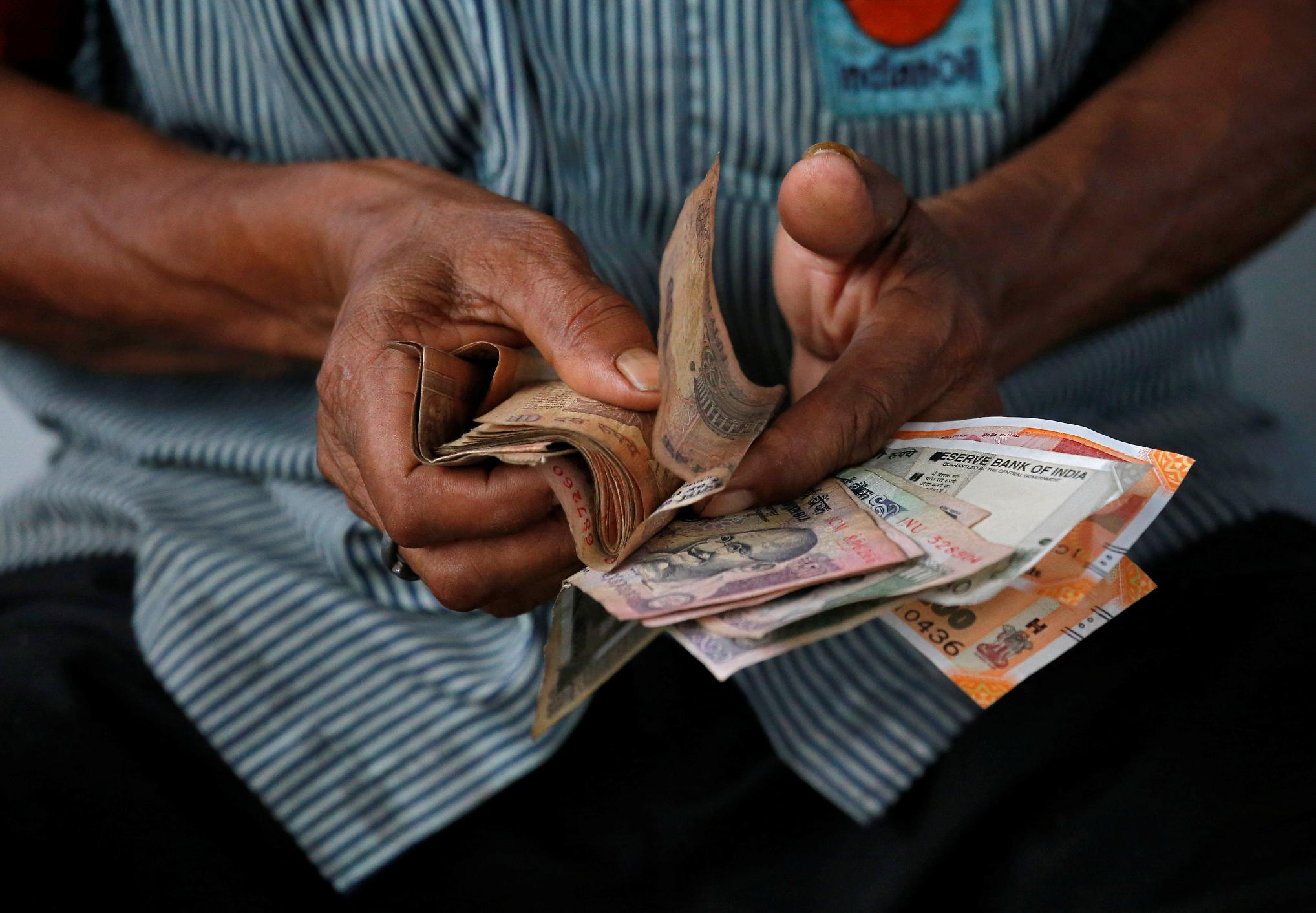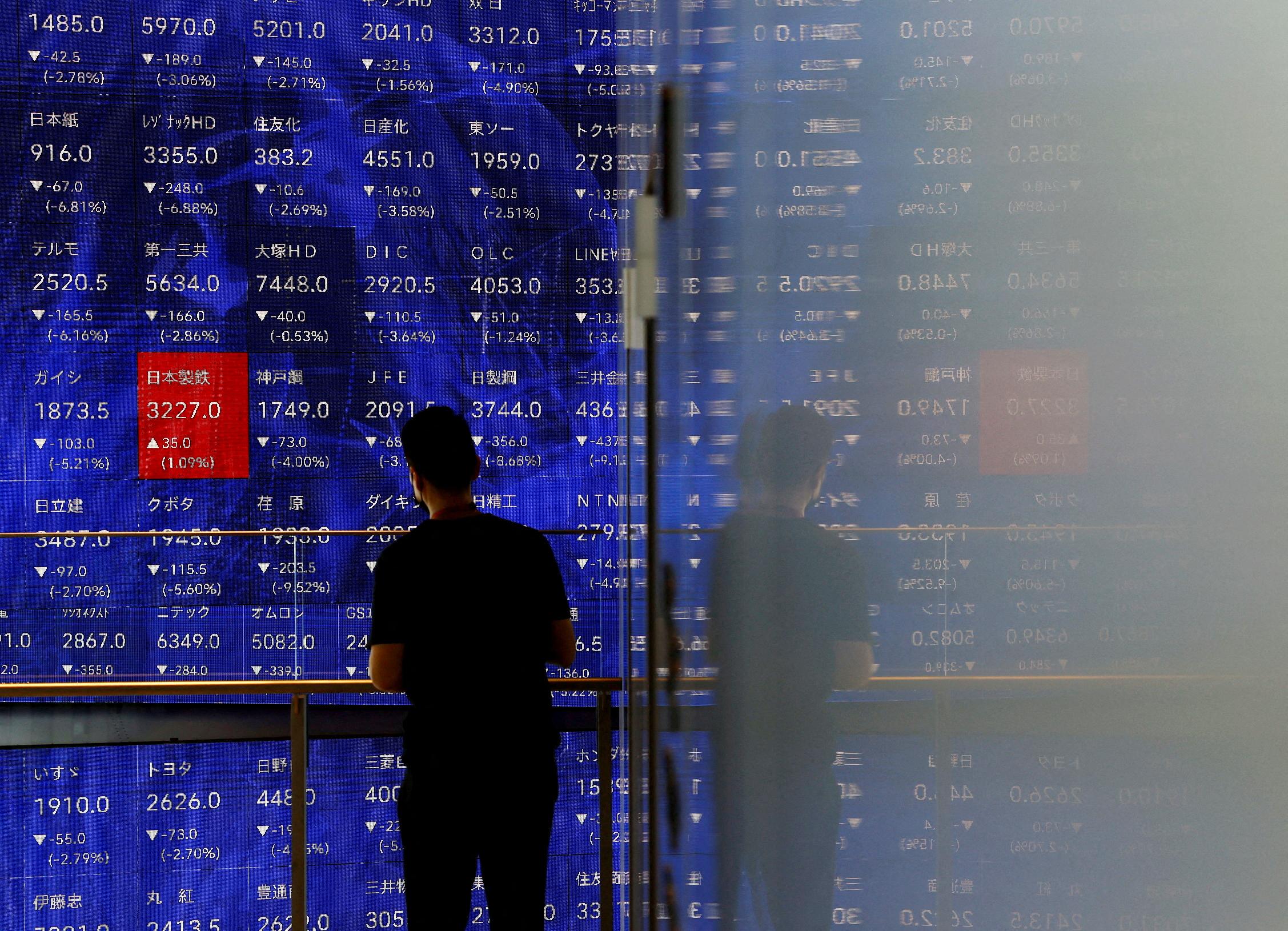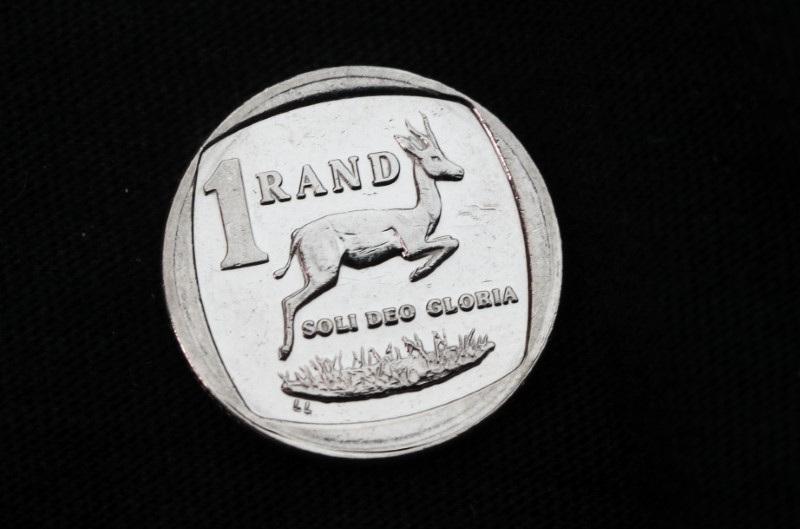
2024-08-16 10:26
2025 fiscal deficit proposed at 2.53% of GDP, vs 2.7% in 2024 Total spending of $230 bln is 6% higher than 2024 Revenue target is 7% higher than 2024 Analysts say proposal shows fiscal policy remains prudent Prabowo's free meals programme to start in poorest regions JAKARTA, Aug 16 (Reuters) - Indonesia's outgoing government submitted a 2025 budget plan to parliament on Friday targeting a narrower deficit than this year, which analysts said signalled Southeast Asia's largest economy would remain fiscally prudent under its next president. The budget proposal worth 3,613.1 trillion rupiah ($230 billion), prepared by ministers under outgoing President Joko Widodo and president-elect Prabowo Subianto's economic team, projects a deficit of 2.53% of GDP next year, narrower than this year's expected 2.7%. Total expenditure would be almost 6% higher than the forecast for this year. "We must continue structural reforms, maintain healthy and credible fiscal policy, and enhance collaboration of fiscal, monetary and finance policy," Jokowi, as the president is widely known, told parliament. Investors have been paying close attention to Prabowo's first budget, concerned that he might abandon strict fiscal rules after hinting in his speeches at an appetite for taking on more debt in order to achieve a GDP growth target of 8%. By law, the government must keep the annual fiscal deficit under 3% of GDP, while the outstanding public debt-to-GDP ratio cannot exceed 60%. That ratio is currently at 39%. "I think (the proposal) clarifies that the new government would be fiscally prudent, unlike the rumours about increasing the debt-to-GDP ratio to 50% in next five years that could translate to (an annual deficit of) over 4% to 5% of GDP," said Handy Yunianto, head of fixed income at brokerage Mandiri Sekuritas. Handy said the deficit level was "positive for bond investors." Economist Ryota Abe at Sumitomo Mitsui Banking Corp said that the plan was roughly as expected but that the market still wants to see what policies Prabowo's pick for finance minister pursues. "My specific focus is on how the next president Prabowo will try to accelerate Indonesia's GDP growth to 8% without damaging fiscal policy and investors' risk appetite," he said. Prabowo, who attended the parliamentary session as defence minister, did not respond when asked whether he would change the budget once he takes over from Jokowi in October. ACHIEVABLE GDP GROWTH TARGET The new budget proposal assumes the economy expands 5.2% in 2025, similar to the forecast range for GDP growth this year of 5% to 5.2%. Brian Lee, an economist with Maybank Investment Banking Group, said that growth target looked achievable in view of the expansionary plans in the budget and an expected monetary easing. Inflation in the proposal was projected at about 2.5% next year, the midpoint of the central bank's target range. Based on GDP, inflation and other assumptions, the government has projected total revenues of 2,996.9 trillion rupiah next year, up 7% from this year's outlook. The proposal called for a new excise tax on packaged sugary drinks but it did not go into details. On the spending side, 71 trillion rupiah is allocated to Prabowo's flagship "Free Nutritious Meals" programme, unchanged from previous announcements on the programme. The programme is set to be implemented in stages, first in regions with high rates of poverty and stunted child growth, according to the proposal submitted to parliament. A total of 400.3 trillion rupiah is proposed for infrastructure spending, including for the continued construction of Indonesia's new capital city. The proposal also calls for reform of the government's energy subsidy policy, moving away from blanket subsidies to targeted distribution to individual beneficiaries. ($1 = 15,686 rupiah) Sign up here. https://www.reuters.com/markets/asia/indonesia-proposes-2025-budget-targeting-narrower-deficit-2024-08-16/

2024-08-16 10:17
A look at the day ahead in U.S. and global markets from Mike Dolan The U.S. economy is doing just fine and markets now accept a quarter-point rate cut from the Federal Reserve next month will be enough to get the easing cycle going as disinflation resumes. That was the basic conclusion from a torrent of macro economic updates on Thursday that showed American shoppers in fine fettle, WalMart (WMT.N) , opens new tab upping forecasts and jobless claims ticking lower. It's not all clear skies and sunshine - some weakness persists in manufacturing and housing. But as inflation is returning to target, it allows the Fed to start taking its foot off the brake in September and underscore the decent expansion. Despite the retail spending spree, the Atlanta Fed's 'GDPNow' real time estimate cooled to 2.4% growth for the current quarter from 2.9% previously. And U.S. and global economic surprise indexes remain in negative territory overall. Overall, the updates have been enough to bat away thoughts of recession without removing Fed easing hopes. The debate about whether the first cut will be a quarter or a half point seems settled for now and futures price just 30 basis points of cuts for next month - and just 61bps over the remainder of the year. There had been more than 100bps of 2024 cuts assumed at the start of the week. The Fed's annual Jackson Hole symposium late next week now colors in the central bank's thinking and earnings from AI-bellwether Nvidia (NVDA.O) , opens new tab on Aug 28 kick the tyres of the artificial intelligence theme. Fed chair Jerome Powell speaks next Friday as Jackson Hole event gets underway. But it's clear already that most Fed officials are prepared for easing to start next month, if only to prevent renewed disinflation lifting the real inflation-adjusted policy rate even further from 17-year highs. "It now appears the balance of risks on inflation and unemployment has shifted ... the time may be nearing when an adjustment to moderately restrictive policy may be appropriate," St. Louis Fed President Alberto Musalem said on Thursday. Srugging off its near heart attack early last week (.VIX) , opens new tab, Wall St seems to like the current constellation. After Thursday's roaring stock rally (.SPX) , opens new tab, (.IXIC) , opens new tab, S&P500 futures are higher again on Friday and the index looks set to record its best week of the year with gains of almost 4%. And Treasuries were only mildly put off by the reset of Fed expectations - with two-year yields returned back above 4% on Thursday and holding there early today. The dollar index (.DXY) , opens new tab firmed up in tandem. Perhaps reflecting more sustainable times ahead, the negative daily correlation between stocks and bonds that's returned since Aug 1 has been sustained just as the VIX volatility index returns just below its historic median. The overseas market mood was similarly ebullient, with Japan's Nikkei (.N225) , opens new tab surging again on Friday - gaining more than 3% to record a spectacular weekly bounceback from Aug 5's yen-related turbulence that now ranks as its best week in more than four years. Thursday's second-quarter GDP beat from Japan has helped and the yen easing back a bit. Despite a more mixed economic picture in Europe - sapped in part by China's ongoing economic stumble - European stocks (.STOXX) , opens new tab also caught Wall Street's slipstream on Friday to stay on track for their best week in three months. Chinese stocks were firmer too after Thursday's interview with central bank governor Pan Gongsheng indicated the bank will will stick to a supportive monetary policy. Sterling was an outperformer on currency markets after data showed British retail sales rebounded 0.5% in July, in line with expectations. Next up stateside on Friday is July's housing starts report, with the corporate earnings diary thinning out. In company news, Applied Materials (AMAT.O) , opens new tab forecast fourth-quarter revenue slightly above estimates after the bell on Thursday, anticipating a surge in AI-fueled demand for its chip-making equipment. But shares of the Santa Clara, California-based company were down 2.8% in extended trading after having closed about 5% higher on Thursday. Key developments that should provide more direction to U.S. markets later on Friday: * US July housing starts and permits, University of Michigan August household survey * Chicago Federal Reserve President Austan Goolsbee speaks * US corporate earnings: Campbell Soup Sign up here. https://www.reuters.com/markets/us/global-markets-view-usa-pix-2024-08-16/

2024-08-16 10:17
MUMBAI, Aug 16 (Reuters) - The Indian rupee lingered in a tight band before closing nearly flat on Friday as most of its Asian peers reversed early losses and mild dollar sales from foreign banks helped the currency hold above its all-time low. The rupee closed at 83.94 against the U.S. dollar, nearly unchanged from its close of 83.9475 in the previous session. The local unit was nearly flat week-on-week as well. Benchmark equity indexes, the BSE Sensex (.BSESN) , opens new tab and Nifty 50 (.NSEI) , opens new tab, closed higher by about 1.6% each after firm U.S. economic data allayed fears of a slowdown in the world's largest economy and spurred a global stock rally. Dollar sales from foreign banks, likely on behalf of custodial clients, helped support the rupee, a foreign exchange trader at a private bank said. "State-run banks' offers (on USD/INR) start to appear every time it moves towards 83.97 so there is limited appetite to go long at these levels," the trader added. The Reserve Bank of India has routinely intervened via state-run banks to help the rupee hold above the 84-handle, a psychologically important support level for the currency, traders said. The currency had declined to its record low of 83.9725 last week, pressured by outflows from local equities and strong dollar demand from importers. Overseas investors have sold about $2.5 billion of local on a net basis in August so far, according to stock depository data. The dollar index was down 0.2% at 102.8 while Asian currencies were mostly steady, having trimmed declines from earlier in the day. The dollar index "is consolidating, but we have a bias for a drop to 102.15/25 next week," ING Bank said in a note. Meanwhile, dollar-rupee forward premiums declined with the 1-year implied yield down 5 basis points at 2.05%, pressured by a rise in U.S. bond yields. Sign up here. https://www.reuters.com/markets/currencies/rupee-holds-above-record-low-end-flat-day-week-2024-08-16/

2024-08-16 08:51
Aug 16 (Reuters) - Japanese investment data on Friday confirmed what the sliding yen had been pointing to all week, that after a scary burst of turmoil global investors were back to betting on the Bank of Japan going slow on rate rises and on the yen staying cheap. Japanese investors ploughed the most money into long-term overseas bonds in 12 weeks in the week to Aug. 10 and also bought a lot of short-term foreign debt, Friday's data from the Ministry of Finance showed. The yen has also been sliding steadily this week, ending its sharp rally in early August after the Bank of Japan's surprisingly hawkishness on further rate rises combined with U.S. recession worries to spark an aggressive unwinding of yen-financed carry trades. The flows and the yen's slide have sparked chatter that carry trades are slowly returning, although not everyone is certain. "We can kind of say that yen short covering has been already done and now the positioning is light,"said Yusuke Miyairi, strategist for G10 currencies at Nomura in London. "But then is the carry trade back on? I'm not sure. Yes, dollar-yen is going closer to 150, but the volatility of the FX market remains relatively high." The yen was near 150 on Friday, far from 38-year lows struck last month but equally well below the high of 141.675 yen hit on Aug.5. The sharp swings have kept however volatility elevated, and such volatility usually derails carry trades. But betting on yen weakness has been easier for investors after BOJ Deputy Governor Shinichi Uchida dampened the hawkishness. Positioning has also been favourable after data late last week showing leveraged funds' positions on the Japanese yen shrank to the smallest net short stance since February 2023. A hawkish BOJ would have meant higher yields on Japanese government bonds, and Japanese money coming home, which would have affected the "construct of a weakening yen" essential for carry trades, said Rong Ren Goh, a portfolio manager in the fixed income team at Eastspring Investments. "With the BOJ assuring that they will not hike if markets turn unstable, it’s a 'put' on the overseas investments of domestic investors," he said. FLOWS Japanese investors bought 1.54 trillion yen worth of long-term overseas bonds last week, marking the largest weekly net purchase in 12 weeks, and also acquired short-term instruments totalling a net 453.5 billion yen. Japanese investors, however, shed foreign shares worth a net 328.1 billion yen after three weeks of net purchases in a row. Nomura's Miyairi cautions against reading too much into the flows data about yen positioning, as some Japanese investors, such as banks, often use interbank repurchase transactions, or repos, to finance their purchases of bonds. Overseas investors also snapped up about $3.5 billion in Japanese shares last week, reversing three consecutive weeks of net selling during which the Nikkei share average (.N225) , opens new tab saw its biggest one-day plunge since 1987. The Nikkei has surged over 20% since. Foreigners also reversed an eight-week Japan bond selling trend last week, becoming net buyers. They acquired a net 1.44 trillion yen in long-term bonds, the largest amount since May 11, and a net 561.8 billion yen in short-term securities. That kind of "bargain hunting," at least on a dollar term, may continue with the yen having bottomed out and stablizing, said Masafumi Yamamoto, chief currency strategist at Mizuho Securities. "The underperformance of Japanese equities has been a good chance for foreign investors to buy." ($1 = 148.9000 yen) Sign up here. https://www.reuters.com/markets/asia/relieved-foreigners-scoop-up-japanese-stocks-markets-rebound-2024-08-16/

2024-08-16 07:59
NAPERVILLE, Illinois, Aug 15 (Reuters) - Record yield expectations have been laid out for U.S. corn and soybeans, and it will be up to next week’s Pro Farmer Crop Tour to either reinforce or reject this narrative. The crop tour, in its 32nd year, will run from Monday through Thursday. About 100 scouts will hit well over 1,000 corn and soybean fields across Illinois, Iowa, Nebraska, Minnesota, Indiana, Ohio and South Dakota to determine yield potential. I will join the western half of the tour for the 11th time and ninth consecutive year. Knowing the route so well should help me recognize an exceptional crop versus an average one. The U.S. Department of Agriculture this week pegged corn and soybean yields at 183.1 and 53.2 bushels per acre, respectively. These would top prior records of 177.3 bushels for corn (2023) and 51.9 for soybeans (2016). Five of the seven tour states are projected to set or tie record corn yields, including Illinois, Iowa and Indiana, which account for 39% of total corn production. Illinois is seen at 225 bpa, some 11 bpa over the previous high. The task of tour scouts this year is to confirm the strong potential by measuring three metrics in each corn field: ear population, length of grain fill on the ear and the number of kernel rows around the ear. Simply put, the more kernels packed on to the ear, both lengthwise and widthwise, the bigger the yields could be. The highest average Illinois corn yield measured by the tour was 196.96 bpa in 2014, a banner year for the state and one the market has been comparing with 2024 when it comes to price and fundamental patterns. The highest tour yield for Iowa corn was 190.76 and Indiana’s high was 193.48 bpa, both in 2021. These numbers are important to highlight because they do not necessarily match official USDA records, which show Illinois’ high at 214 bpa in 2022, Iowa 204 bpa in 2021 and Indiana 203 in 2023. The differences arise because the tour routes do not cover all production areas in each state, leading to sampling biases. It is critical to analyze tour data with past tour data and not with USDA data since they are not directly comparable. I will be posting nightly state results on X throughout the tour and will be providing comparisons with past years. I and other scouts will be posting crop photos from the field using hashtag “#pftour24.” SOYBEANS AND OTHER TOUR TIDBITS The tour uses a rough corn yield calculation, though it does not estimate soybean yield. Instead, scouts approximate the number of pods in a three-by-three-foot plot of soybean plants, which is meant to gauge yield potential. USDA predicts Illinois, Indiana and Ohio will notch record bean yields this year. All three states’ highest tour pod counts were in the 1,300-range, something to keep in mind when reviewing this year’s data. Although the Corn Belt has largely enjoyed benign, yield-supportive weather this summer, things were not perfect everywhere. Parts of the western Belt, including Minnesota, endured an extremely wet spring following planting, potentially capping yields. The tour should pay particular attention to Minnesota, where crop conditions have been lower than in other major states. USDA pegs Minnesota corn yield at 185 bpa, the same as last year, but down 10 bpa from its record, and beans at 49 would be 1 bpa above 2023. Advisory service and tour host Pro Farmer, a division of Farm Journal Media, normally publishes a national yield estimate and select state forecasts the Friday after tour wraps. Those numbers incorporate tour findings along with other yield-influencing factors. Pro Farmer’s national yield estimates tend to come in below those of USDA, particularly for corn, having done so in 12 of the last 15 Augusts by an average close to 4 bpa. But USDA’s September corn yield forecast is often lower than in August (nine of the last 15 years), which is why paying close attention to the tour and its results could prove fruitful in anticipating the direction of this year's yields. Karen Braun is a market analyst for Reuters. Views expressed above are her own. Sign up here. https://www.reuters.com/markets/commodities/huge-us-corn-soy-yields-will-be-put-test-by-annual-crop-tour-2024-08-16/

2024-08-16 07:27
JOHANNESBURG, Aug 16 (Reuters) - South Africa's rand was on course for gains of over 2% this week, while stocks hit a record high in intra-day trade on Friday, as upbeat U.S. economic data allayed fears of an imminent recession in the world's top economy. At 1643 GMT, the rand traded at 17.8850 against the U.S. dollar , up about 0.65% on Thursday's closing level. The dollar was last down about 0.39% against a basket of global currencies . The Johannesburg Stock Exchange's Top-40 index (.JTOPI) , opens new tab hit a record high in intra-day trading on Friday. It closed over 0.7% up. "Positive economic data out of the world's largest economy this week has aided risk on sentiment of which South Africa is a beneficiary," said Shaun Murison, senior market analyst at IG. Like other risk-sensitive currencies, the rand often takes cues from global drivers such as U.S. economic data and monetary policy in addition to local data points. Markets will likely focus on a speech from Fed Chair Jerome Powell at the Jackson Hole Symposium of global central bankers in Wyoming next week for further hints on the interest rate path of the U.S. South Africa's benchmark 2030 government bond was weaker as the yield gained 9 basis points to 9.32%. Sign up here. https://www.reuters.com/markets/currencies/south-african-rand-heads-2-weekly-gain-improved-risk-appetite-2024-08-16/
